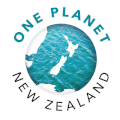Plastic is a relatively new material, invented originally from cellulose fibres in the 1850s, then from oil. As technology and manufacturing have developed the range and use of plastics has been integrated into every aspect of modern life. Plastic is an incredibly useful material - it is malleable, water resistant, strong and lightweight. But the problem begins when we make disposable, single-use items made from plastic. The fact that it is strong and will never breakdown then becomes an issue as we need to dispose of these things somewhere. It is often into landfill with some things getting recycled into new plastic products or down cycled into lesser plastic products.
Making plastics
Plastics are polymers, which are long chains of molecules made from smaller molecules called monomers. Plastics react to heat in one of two ways. Some soften and melt, and only return to a solid state when cool (e.g. polystyrene). These are called thermoplastics, and are made into things like bowls, buckets and packaging. Other plastics remain rigid when reheated - these are called thermosetting plastics - because their long molecule chains are criss-crossed. Most plastic products are made by moulding, either injection moulding or extrusion moulding.
Plastic bottles for water, milk, soft drinks or food are made from polyethylene terephthalate (PET) and are formed by extruding material into a preform, and then blow moulding the preform into a finished shape.
Polystyrene beads, containing trapped air, are moulded into light-weight packaging material, but hard to dispose of. If melted after use, they concentrate into heavier plastic pieces ready for recycling, as demonstrated by Ashburton Wastebusters in this photo:

Recycling
Although most plastics could be recycled, mixed plastics must be separated first into their different types. The Plastics Industry Trade Association designed an identification code to aid in recycling plastics. The Identification Code, which shows the type of resin content, is a logo of three arrows, with the plastic type identified by a number in the middle. Plastics are grouped into 7 types, with the first six being the most common, and 7 for everything else.
The main thing to know about these recycling codes is that they do not identify plastics that can be recycled, they indicate to facilities what the plastic type is and from that they will sort it into those that can be recycled and those that cannot. Degradable, biodegradable and/or compostable plastics cannot be recycled.

Recycling in New Zealand
From 1st February 2024, all Councils now collect the same items in their kerbside recycling bins.
The New Zealand Government is looking to launch a Container Deposit Scheme, also known as a bottle deposit, to make sure that a large quantity of disposable but still highly recyclable bottles make it back to the recycling process rather than ending up in landfill or the environment.
Plastic bottles, trays and containers numbered 1, 2 & 5 can be recycled in kerbside collections in New Zealand. This includes milk and soft drink bottles, shampoos, moisturizers, margarine and ice cream containers, janitorials etc. Check your local council for the specifics for your kerbside recycling collections or drop-off points.
Opportunity to recycle soft plastics like bread bags, supermarket bags and plastic cling wrap varies according to the availability of the Soft Plastics Recycling Scheme.
Find out more: The Ministry for the Environment website provides further information about kerbside recycling of plastic bottles and plastic trays and containers.
Major environmental effects of plastics
Made from non-renewable resources
Modern plastics are made from oil and natural gas - both are non-renewable resources.
Use reusables as it reduces use of plastic. Even if your reusable cup or drink bottle is plastic, it reduces the DISPOSABLE plastic used!
By-products of processing
Research points to the dangers of plastics to human health through both its production and disposal. Chemicals, such as phthalates, bisphenol A (BPA), or polybrominated diphenyl ethers or PBDEs, may leach into food or water consumed by humans and into the natural environment. Although made from recycled plastics such as milk bottles (which seemed commendable at first), the plastic 'fleece' fibre jackets that are becoming common clothing items shed small fibres into water every time they are washed and these persist in nature. Natural fibres are not as environmentally damaging after use, as they can decay, but may also cause pollution at manufacture - such as bleaching of cotton.
Marine pollution accumulating
Many plastics do not break down, but break into smaller and smaller pieces causing rubbish to accumulate in the oceans. Small-sized particles, but large quantities, of indigestible plastics are entering river and marine food chains, and are found persisting all over the planet.
The Great Pacific Garbage Patch is the name given to the area containing plastics and rubbish trapped in the currents of the North Pacific Gyre. Part of the Great Pacific Garbage Patch is the Eastern Garbage Patch estimated to be twice the size of Texas.
Cleaning up the garbage patch is a complex problem. The best solution is to limit or eliminate the use of disposable plastics at the beginning.
Zero Waste Europe presents a short video on the extent of plastics washing onto beaches.
Marine debris causing animal harm
Marine Debris can be very harmful to marine life
- Entanglement is a particular risk for diving birds, seals, dolphins and other marine mammals.
- Disturbance to food webs occurs as a result of trash blocking sunlight or being mistaken for food by filter-feeders.
- Harmful pollutants can both leach out of and be absorbed by plastics.
- Plastic pollution can cause death to wildlife from starvation (by displacing useful food), choking and/or toxicity.
Plastic Free July
Plastic Free July is an annual effort to avoid disposable plastics, especially in food packaging and disposable supermarket bags.

